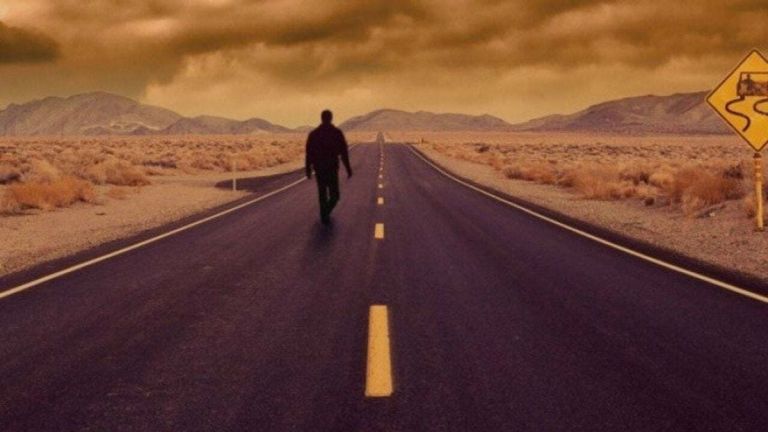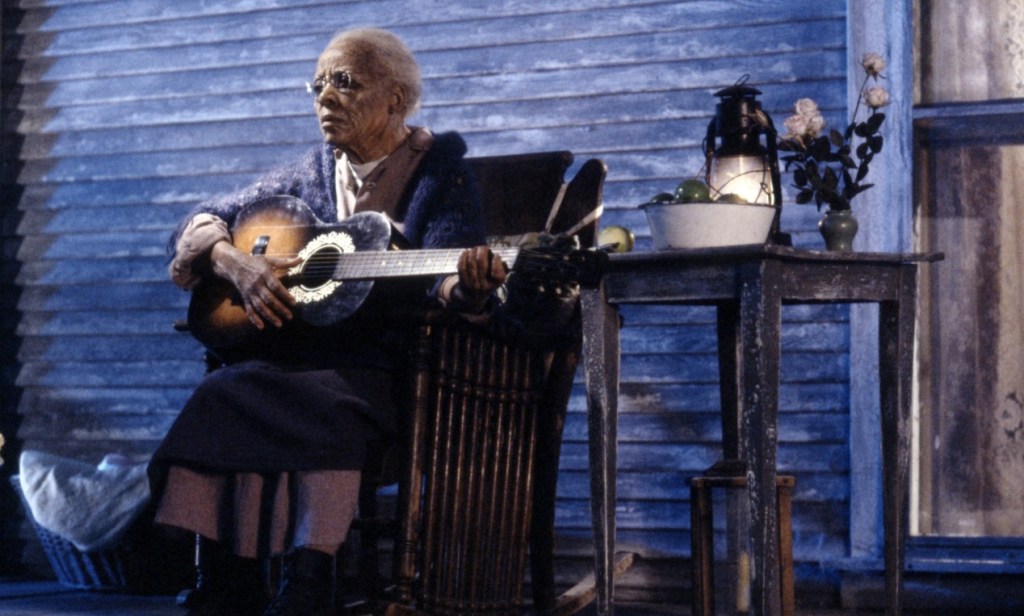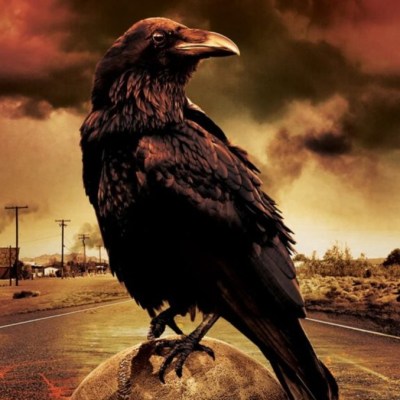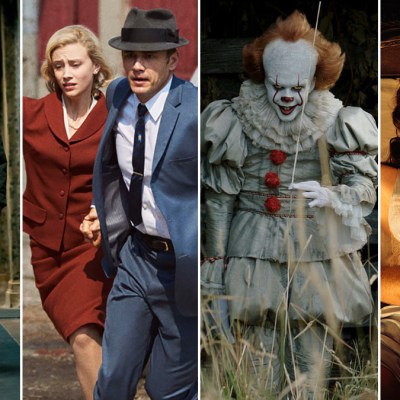The Stand 1994 Miniseries is a Forgotten Stephen King Classic
More than 26 years later, how does the first miniseries adaptation of Stephen King’s epic hold up?

This article contains spoilers for the 1994 miniseries The Stand and likely the 2020 series by extension.
The Stand is considered by many, to this day, to be one of Stephen King’s three or four finest novels. It is certainly among his most beloved by longtime readers, because of its sheer size (more than 800 pages when originally published in 1978, more than 1,000 in the unexpurgated version released in 1990) and the scope and breadth of its storytelling. A hybrid of horror, apocalyptic sci-fi and epic fantasy (King has said he explicitly wanted to create a sort of modern day The Lord of the Rings), it’s an eerie, surreal tale of the fall of civilization and the battle for the souls of those left alive in the aftermath.
A motion picture adaptation was first announced on the back cover of the paperback version of the book (with George A. Romero directing), but to many, a miniseries seemed like the only way to adapt The Stand due to its sheer size. King was against the idea for a long time, famously saying, “You can’t have the end of the world brought to you by Charmin toilet tissue.” But King’s thinking eventually changed, and in 1992 ABC — which had scored a tremendous hit with a two-part, four-hour adaptation of King’s It two years earlier — gave The Stand the green light.
King, an executive producer on the project, wanted Mick Garris to direct it after the two had hit it off on the set of Sleepwalkers, a movie based on an original King screenplay. Unlike It and a second ABC/King miniseries, 1993’s The Tommyknockers — both of which had been four hours — The Stand was developed as a four-night, eight-hour event, containing a little over six hours of content after commercials. Budgeted at $26 million, featuring more than 125 speaking parts, and shot over six months in Utah, Las Vegas and other locations, The Stand premiered on ABC from May 8 – 11, 1994.
The Stand begins with the spread of a military-created bioweapon that becomes known as the superflu or Captain Trips after it escapes from a high-security lab. The flu’s 99% mortality rate ensures that human civilization is all but wiped out, although the remaining 1% is completely immune for reasons unexplained.
As the survivors in the U.S. struggle to stay alive in a post-apocalyptic wasteland filled with tens of millions of rotting corpses, they are plagued by mysterious dreams that draw them to one of two places. Some head for Boulder, Colorado, where it seems as if decent, “good” people are gathering around an elderly Black woman named Mother Abigail who claims to speak for God, while others of a less kind bent congregate in Las Vegas under the rule of Randall Flagg, a “dark man” with supernatural powers who is a powerful demon in human form.
As the two groups assemble, it becomes clear that a confrontation is shaping up, with four of the Boulder Free Zone’s leaders — and four of our main characters — eventually heading to Las Vegas where they will make their “stand” against Flagg.
Even with six hours to fill, King and Garris had to do quite a bit of condensing to fit The Stand into its format. Nevertheless, just about all the major plot points and characters from the book make it into the miniseries, even if some don’t quite get the development they deserve. Yet the show moves along at a decent if unhurried pace, giving one time to invest in the story and the characters enough to care about what happens and who survives (many don’t).
The cast is a grab-bag of faces from both the big and small screen. Gary Sinise — months away from his breakout role in Forrest Gump — is absolutely perfect as Stu Redman, the Texas blue collar everyman who is among the first to make contact with the superflu and walk away unscathed. Also quite effective are Rob Lowe as the saintly deaf mute Nick Andros, who becomes one of the leaders of the Free Zone, Ray Walston as the sarcastic sociology professor Glen Bateman, and Bill Fagerbakke as the sweet, developmentally disabled Tom Cullen.
Less impressive but improving over the course of the six hours is Adam Storke as the self-centered rock musician Larry Underwood. Larry is a crucial character in The Stand: it’s his ability to evolve from a selfish narcissist to a leader willing to sacrifice himself that is key to the triumph of good over evil. Storke has his moments and Larry does blossom in the latter stages of the story, but he doesn’t pull off the character’s transformation as effectively as one might have hoped.
More compelling are Laura San Giacomo as Nadine Cross (a character who, in the show, is a hybrid of the book’s Nadine and Larry’s doomed traveling companion Rita Blakemoor) and Corin Nemec as Harold Lauder. The former has promised herself to Flagg, while the latter is an incel on steroids; together they plot a terrorist attack to kill the Free Zone’s leaders before skipping town for Vegas. They too are doomed, but their collision course with each other and their fate is decidedly repulsive.
Of the major “good” characters, it’s sad to say that Molly Ringwald just doesn’t pull her weight as Frannie Goldsmith, the pregnant young woman who is the object of Harold’s desire but whom ultimately falls in love with Stu. Ringwald comes across as naïve and whiny, and her acting here is a pale shadow of her glory years in movies like Sixteen Candles and Pretty in Pink. More effective, excellent in fact, is Miguel Ferrer as Lloyd Henreid, the small-time crook and killer who becomes the take-charge right hand man to Flagg in Las Vegas, and an over-the-top Matt Frewer as the Trashcan Man, a pyromaniac who Flagg entrusts with finding weapons left out in the Nevada desert by the government.
Which brings us to Flagg and his opposite, Mother Abigail. Flagg, a recurring embodiment of evil and treachery in many King novels and stories, was reportedly the hardest role to cast. Although King and Garris initially wanted a Hollywood star, they went with the lesser known Jamey Sheridan, who brings a kind of manic glee to the role even if his heavy metal wig is questionable. Ruby Dee was practically born to play Mother Abigail (she even told Fangoria magazine that “her whole life had been research” for the part), and while the character as originally written suffers from King’s tendency to create “magical Negros” for his stories, Dee still brings poignancy and dignity to the role.

If we’ve spent a lot of time on the casting, that’s because The Stand really does live or die — and in this case it’s the former — on the strength of the characters and their relationships. Even if some of the acting is more on a typical TV level (or even below), Garris and King and their cast succeed in making you care about what happens to these people as they first survive the plague and then summon the fortitude to not just restart civilization but face an ultimate evil before they can barely catch a breath.
But Garris brings plenty of other effective touches to the show, starting with the panoramic vistas that he shoots to emphasize just how empty the world has become. The show does have an epic sweep to a lot of it, even with the restrictions of TV back in 1994, and W.G. Snuffy Walden’s (who is best known for scoring The West Wing) spare, evocative score goes a long way toward setting the melancholic yet ominous tone that Garris evokes through most of The Stand’s six hours.
There are also some truly memorable setpieces, starting with the opening tracking shot of corpses strewn all over the underground military lab to the tune of Blue Oyster Cult’s “(Don’t Fear) the Reaper.” Stu’s harrowing escape from the lab in which he is kept is pretty terrifying stuff for 1990s television, and while we wish Larry’s walk through a Lincoln Tunnel stuffed with dead cars and bodies lasted a bit longer, it still packs somewhat of a punch. Although Mother Abigail’s home is clearly a set on a soundstage, the scene in which she looks back at it as she leaves for Boulder, knowing she’ll never see it again, is quietly moving, as is the moment when Larry, Glen and Ralph Brentner (Peter Van Norden) have to leave an injured Stu behind on their long walk to Vegas.
The climax, the “stand” of the title, is problematic, but that’s possibly because it’s always been a hotly debated moment in the novel as well. Stu, Larry, Glen and Ralph are instructed by a dying Mother Abigail to walk to Vegas and confront Flagg. As we mentioned, only Larry, Glen and Ralph make it; Glen is shot to death by Lloyd Henreid in his cell, while Larry and Ralph are to be publicly executed by dismemberment, in front of the entire population of Vegas, on Flagg’s orders.
Just as the execution is getting underway, a radiation-sick Trashcan Man returns from the desert with a nuclear weapon in tow. With the men of the Free Zone having shown their worth to God by facing Flagg with courage and offering to give their lives to defeat him, the Almighty takes over from there. He turns a little ball of electricity that Flagg used to fry a traitor in the crowd into a manifestation of “the hand of God,” detonating the bomb and wiping out Flagg, his minions, and our selfless heroes.
While many have criticized this scene in both the book and miniseries as a “deus ex machina” climax, it actually makes sense: the Free Zone heroes can only do much themselves against an immortal, powerful being like Flagg. They can weaken him, but they can’t quite destroy him. Once they’ve proven themselves, however, by standing up to Flagg and his unknowable evil with faith and courage, God finishes the job. The problem is that in the book, Larry and Ralph interpret the thing in the sky as the “hand of God.” In the miniseries, Garris made it look like an actual hand.
That adds a layer of cheesiness to what is otherwise a strong climax, as does having Mother Abigail’s disembodied, cooing head float above the crib of Frannie’s baby in the hospital during the closing moments, looking like a cutout picture of Ruby Dee’s face slapped on the glass window of the nursery. It’s effective and emotional to have the show close on a shot of the baby, sleeping peacefully and virus-free and metaphorically carrying the future on her tiny back, but the Abigail phantom almost ruins it.
For all its faults — its dated view of the American populace (even with 99% percent of the world wiped out, there are far too few people of color among the survivors), its creaky fashions, its occasionally cut-rate visual effects and its uneven acting — The Stand still holds up pretty decently. Sinise and the stronger actors do much of the heavy lifting, the story and stakes are clearly laid out, and the viewer becomes involved in the characters and their struggle.
Now more than 25 years later, The Stand is being adapted again by Josh Boone (The New Mutants) and Benjamin Cavell (King’s son Owen is also a producer and writer on the project). The 10-part miniseries will debut Thursday (December 17) on CBS All Access, and in addition to a different structure for the story, the series will feature a brand new ending written by Stephen King himself. In the meantime, the original 1994 version still has heart, plenty of it, and for King and Mick Garris, it was evidently a labor of love. It may be far from perfect, but one could say it stands on its own two feet.


